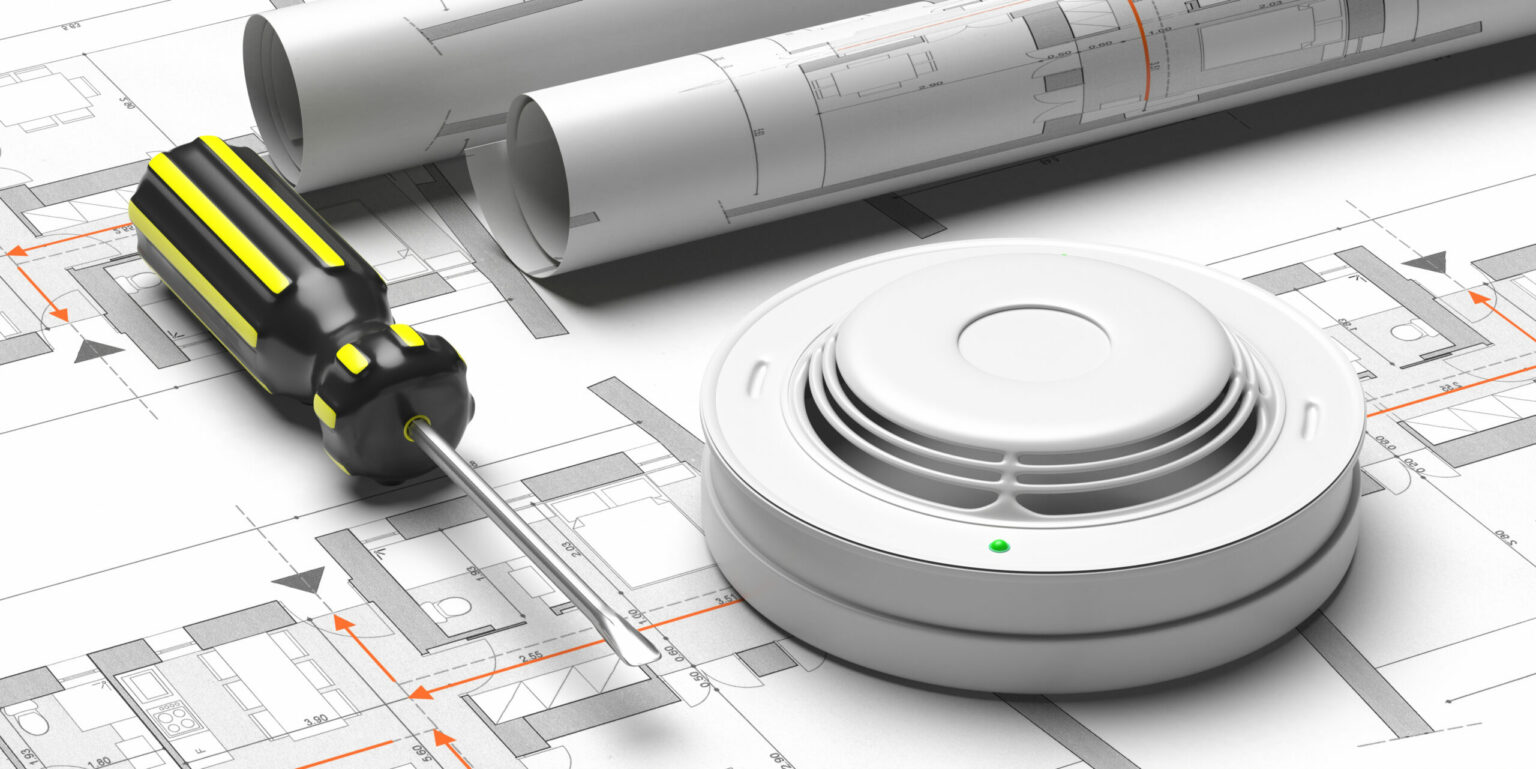Advancing alarm agility: The rising demand for fire detection systems
- April 16, 2024
- 10:20 am


Iain Hoey
Share this content
IFSJ looks at the driving forces behind the rising demand for advanced fire detection systems, from stringent safety regulations to the surge in smart home integration
Initially developed to mitigate the risk of fires, smoke, and carbon monoxide poisoning, detection systems have become integral in both residential and commercial settings.
The market encapsulates a broad range of products, from basic smoke detectors to sophisticated CO2 monitoring systems, with a primary focus on ensuring safety and compliance with regulatory standards.
Trends
Currently, the market is shaped by several trends.
Technological advancements have been pivotal, particularly the integration of IoT and AI in detection systems.
These innovations improve the reliability of the systems and allow for remote monitoring and data analysis, enhancing overall safety.
Additionally, the rising trend of smart homes has bolstered the integration of detection systems with home automation, offering users enhanced control and real-time alerts.
Regulatory requirements and increased awareness about safety are key drivers of this market.
Globally, governments and safety regulatory bodies have been implementing stringent fire and CO2 detection norms, particularly in the wake of recent tragic fire incidents.
This has led to a surge in demand for these systems.
Moreover, the growing construction industry worldwide, with a focus on safer and smarter buildings, further propels the market growth.
Challenges
However, challenges persist.
High installation and maintenance costs of advanced systems can be a deterrent, especially in cost-sensitive markets.
Additionally, technological limitations, such as issues related to false alarms and detection failure, have been restraining factors.
Despite these challenges, the market is poised for growth, driven by technological innovation, regulatory mandates, and an overall heightened emphasis on safety and prevention.
Regional breakdown
In North America detection market thrives under stringent safety regulations and technological innovation.
The United States leads, driven by rigorous building codes and a high adoption rate of smart home systems.
Canada follows suit, with a focus on compliance with national safety standards and a growing preference for technologically advanced systems.
Europe presents a diverse market, with Western European countries exhibiting strong demand, propelled by strict EU safety regulations and a high level of awareness regarding fire safety.
Eastern Europe shows potential growth, primarily due to ongoing infrastructural development and the gradual adoption of newer technologies.
Asia-Pacific is the fastest-growing region in the detection market.
Rapid urbanisation and industrialisation, particularly in China and India, have significantly increased the demand for detection systems.
Furthermore, governmental initiatives to improve safety standards in buildings are contributing to market expansion in this region.
Latin America and the Middle East, while slower in adoption, are gradually recognising the importance of these systems.
In Latin America, growth is driven by urban development and a rising awareness of safety.
In the Middle East, investment in infrastructure and an increasing emphasis on safety standards, especially in the UAE and Saudi Arabia, are key growth factors.
Overall, while market penetration and growth rates vary, the global trajectory for the detection market is one of steady expansion, driven by technological advancements, regulatory mandates, and a universal focus on safety.
Future projections
By 2030, the detection market is expected to significantly expand, with the Asia-Pacific region leading in terms of growth rate, driven by rapid urbanization and industrialization.
North America and Europe will continue to be substantial markets, sustained by stringent safety regulations and technological advancements.
Emerging markets in Latin America and the Middle East are also expected to show considerable growth due to increased safety awareness and infrastructural investments.
Technological innovation remains a key driver in this market.
The integration of Artificial Intelligence (AI) and the Internet of Things (IoT) is set to revolutionize detection systems, offering more precise and efficient monitoring capabilities.
Advances in sensor technology, including the development of more sophisticated smoke and gas detectors, are likely to enhance detection accuracy and speed, thereby reducing false alarms.
Additionally, the incorporation of machine learning algorithms can facilitate predictive maintenance, foreseeing system failures before they occur.
Market players will consider investing in AI and IoT capabilities to stay competitive.
This technology is enhancing product offerings and opening avenues for new service models, like real-time monitoring services.
Companies will also focus on emerging markets in Asia-Pacific and Latin America, where the demand for advanced detection systems is increasing.
Tailoring products to meet regional regulations and preferences will likely provide a competitive edge.
There is also an opportunity in developing affordable, easy-to-install solutions for markets with cost constraints.
Collaboration with smart home system manufacturers may also prove fruitful, given the rise in smart home adoption globally.
Detection companies will be sure to engage in continuous R&D to stay abreast of technological advancements and evolving safety standards, ensuring their products meet the highest efficacy and reliability standards.

